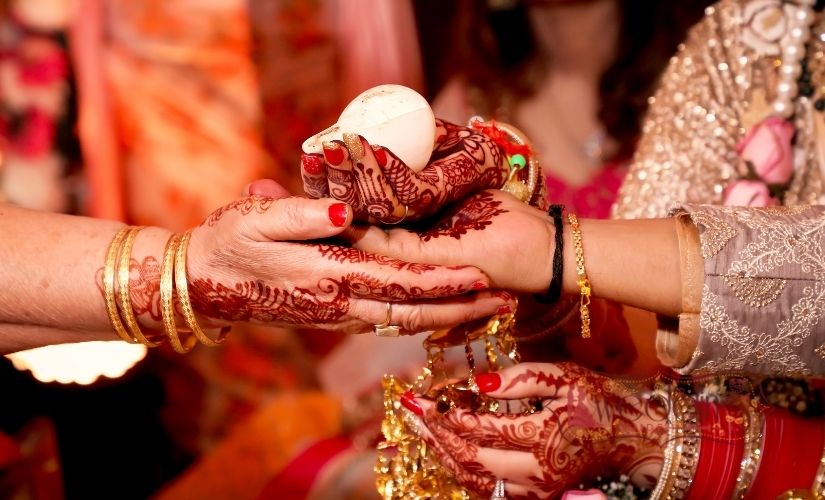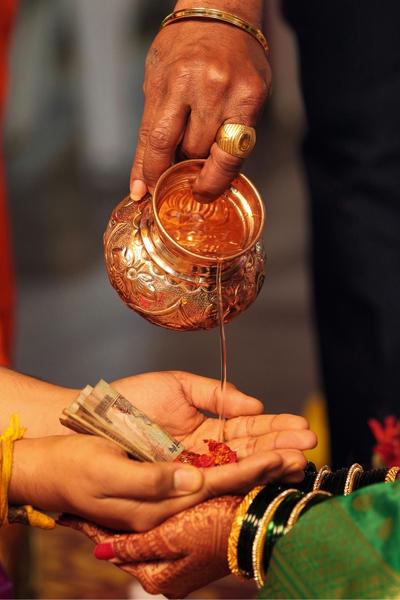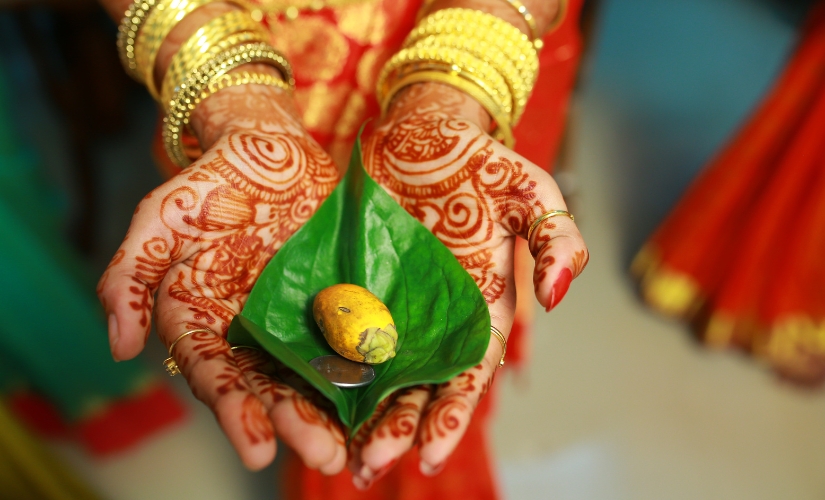
Significance of Kanyadaan
Many rituals and customs are involved in a traditional Hindu wedding but the kanyadaan ceremony is the most intrinsic part of every traditional Hindu wedding. Kanyadaan literally means giving the daughter away, it is a very emotionally charged and a religiously significant ceremony especially for the bride’s parents. It is believed that the father of the bride makes the biggest sacrifice by giving away his dearly loved daughter into the care of her husband for lifetime.
Table of Contents

Religious meaning of Kanyadaan and its significance
As per Hindu beliefs, the bridegroom is considered to be a living form of Lord Vishnu, whereas the bride is considered to be an incarnation of deity Lakshmi, the goddess of prosperity and wealth.
Kanyadaan is a very auspicious ritual in Hindu weddings. It is considered very pious and dutiful ritual to bring luck and relief from all the sins for the bride’s parents. The father hands over all his rights and duties towards his daughter to her prospective husband. As per tradition, groom is considered a form of lord Vishnu and father of bride gives her daughter as a gift to the groom.
Offering gifts to lord Vishnu is believed as the greatest honour and bride’s father offer their daughter, their most special gift to the bridegroom. The groom touches the right shoulder of the bride as a symbol of acceptance, and promises to take care of her for the lifetime.
As mentioned earlier, Kanyadan which literally means ‘Gift of a girl’ signifies the ritual in which the bride is gifted to the groom by her father. This ceremony takes place just before the “saat phere” and is believed as a Maha-daan as per the Hindu religion. A dutiful act, Kanyadan is believed to bring fortune and relieve to the parents of bride from all the sins. As per Hindu religion, the act of kanyadan purifies the bride’s parents from all their misdeeds.
Meaning of Kanyadaan
The word Kanyadaan is made from an arrangement of two words, ‘Kanya’ and ‘Daan’ where Kanya means daughter and Daan means donation. A father hands over all his duties and responsibilities towards his daughter to the groom. In this emotional ritual, a priest reads the holy verses while bride’s father places the right hand of bride in the right hand of the groom and the bride’s mother pours holy water on the palms of bride and the groom. Gold, some money betel leaves, betel nut, dry fruits, conch, and flowers are also placed in their palms.

The bride’s father asks the bridegroom to promise him that he would help her in achieving 3 most important goals of life that are Dharma, Arth and Kama.
The much-loved daughter is given away by the parents to the bridegroom once the ritual finishes and their daughter becomes responsibility of the bridegroom and his family. According to Hindu religion it is considered as the most gracious donation because a father gives away the “prosperity” of his life. For a father, his little daughter is the most esteemed possession; he makes a great effort to provide her best care and affection in her upbringing.
It is a beautiful, pious and an emotional moment in which, the parents formally give away all their rights and responsibilities towards their daughter to the groom. In case, if the bride’s father has died or is not present at the wedding due to some reason, then a close and elderly family member of the bride can carry out this ceremony.
In conclusion, the Kanyadaan ritual is an important and significant part of Hindu weddings. It is the act of the father or a male guardian giving away the bride to the groom, symbolizing the transfer of responsibility for the bride’s well-being from the father to the husband. The Kanyadaan ritual is a deeply emotional and meaningful moment for both the bride and her family, as it marks the end of the bride’s childhood and the beginning of her new life as a married woman.
It is a reminder of the love and sacrifice of the bride’s parents and a celebration of the bond between the couple. The Kanyadaan ritual holds great significance in Hindu culture and is an integral part of Hindu weddings.


